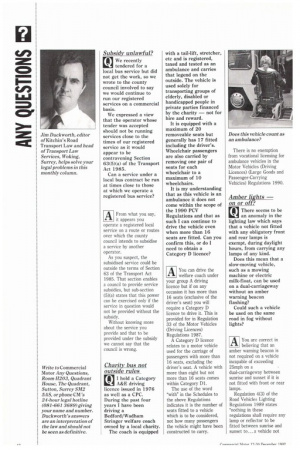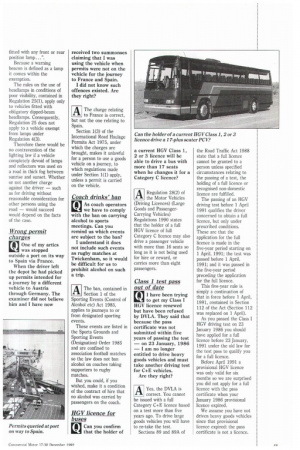Amber lights — on or off?
Page 50

Page 51

If you've noticed an error in this article please click here to report it so we can fix it.
There seems to be an anomaly in the lighting law which says that a vehicle not fitted with any obligatory front and rear lamps is exempt, during daylight hours, from carrying any lamps of any kind.
Does this mean that a slow-moving vehicle, such as a mowing machine or electric milk-float, can be used on a dual-carriageway without an amber warning beacon flashing?
Could such a vehicle be used on the same road in fog without lights?
You are correct in believing that an amber warning beacon is not required on a vehicle incapable of exceeding 25mph on a dual-carriageway between sunrise and sunset if it is not fitted with front or rear lamps.
Regulation 4(3) of the Road Vehicles Lighting Regulations 1989 states "nothing in these regulations shall require any lamp or reflector to be fitted between sunrise and sunset to...a vehicle not fitted with any front or rear position lamp...".
Because a warning beacon is defined as a lamp it comes within the exemption.
The rules on the use of headlamps in conditions of poor visibility, contained in Regulation 25(1), apply only to vehicles fitted with obligatory dipped-beam headlamps. Consequently, Regulation 25 does not apply to a vehicle exempt from lamps under Regulation 4(3).
Therefore there would be no contravention of the lighting law if a vehicle completely devoid of lamps and reflectors was used on a road in thick fog between sunrise and sunset, Whether or not another charge against the driver — such as for driving without reasonable consideration for other persons using the road — would succeed would depend on the facts of the case.
























































































